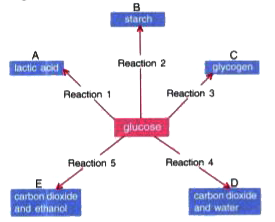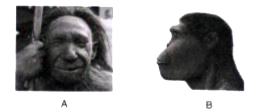Give a description of the family Fabaceae taking the following point into consideration :
(i) systematic position in Bentham and Hooker's system of classification
(ii) salient features
(iii) inflorescence
(iv) floral diagram and floral formula
(v) botanical names and economic importance of five common plants.
Step by step video & image solution for Give a description of the family Fabaceae taking the following point into consideration : (i) systematic position in Bentham and Hooker's system of classification (ii) salient features (iii) inflorescence (iv) floral diagram and floral formula (v) botanical names and economic importance of five common plants. by Biology experts to help you in doubts & scoring excellent marks in Class 11 exams.
Updated on:21/07/2023Topper's Solved these Questions
- MORPHOLOGY OF FLOWERING PLANTS BOOK - ICSECHAPTER - MORPHOLOGY OF FLOWERING PLANTS EXERCISE - Test Your Progress (HOTS)
4 Videos
- MORPHOLOGY OF FLOWERING PLANTS BOOK - ICSECHAPTER - MORPHOLOGY OF FLOWERING PLANTS EXERCISE - Ncert Exercises with Answers
25 Videos
- MORPHOLOGY OF FLOWERING PLANTS BOOK - ICSECHAPTER - MORPHOLOGY OF FLOWERING PLANTS EXERCISE - Test Your Progress (Very Short Answer Type Questions )
35 Videos
- MORPHOLOGY AND ANATOMY OF DIFFERENT SYSTEM OF COCKROACH BOOK - ICSECHAPTER - MORPHOLOGY AND ANATOMY OF DIFFERENT SYSTEM OF COCKROACH EXERCISE - Long Answer type Questions
6 Videos
- NEURAL CONTROL AND CO-ORDINATION BOOK - ICSECHAPTER - NEURAL CONTROL AND CO-ORDINATION EXERCISE - NCERT EXERCISES WITH ANSWER (DIFFERENTIATE BETWEEN)
11 Videos
Similar Questions
Give the floral characteristics of any typical member of the family Solanaceae. Give botanical names of five economically important plants of the family.
View SolutionGiven below are chemical reactions (1 to 5) involving glucose and five other chemical products (A-E).

(a) Write the reaction number of the following:
(i) Anaerobic respiration in plants .........
(ii) End-products in aerobic respiration ...........
(iii) Reaction occurring in liver ............
(iv) Anaerobic respiration in animals ................
(v) Storage in the liver..............
(b) Which reactions (1-5) in the above correspond to the following (write the corresponding number of reaction next to them).
(i) Aerobic respiration
(ii) Change taking place in the liver
(iii) Anerobic respiration in yeast.
(iv) Change taking place in a plant storage organ, e.g., potato.
(v) Anaerobic respiration in animals
View Solution
Knowledge Check
Which of the following is/are the characteristics of the family whose floral diagram is given ?

(i) Aloe, Asparagus and Colchicum belong to this family
(ii) Flower is zygomorphic
(iii) Floral formula is
(iv) Fruits are berry or capsuleA(i),(ii) and (iii)B(iii) onlyC(i) onlyD(i),(iii) and (iv)
Name the type of interaction seen in each of the following examples (i) Ascaris worms living in the intestine of human
(ii) Wasp pollinating fig inflorescence.
(iii) Clown fish living among the tentacles of sea-anemone
(iv) Mycorrhizae living on the roots of higher plants
(v) OPCh-id growing on a branch of a mango tree
(vi) Disappearance of smaller barnacles when Balanus dominated in the Coast of Scotland.
View SolutionStudy the following table in which positions of six elements A,B,C,D,E and F are shown as they are in the modern periodic table.

On the basis of the above table, answer the following question :
(i) Name the element which form only covalent compounds.
(ii) Name the element which is a metal with valency three.
(iii) Name the element which is a non-metal with valency three.
(iv) Out of D and E, which is bigger in size and why ?
(iv) Write the common name for the family to which the elements C and F belongs.
View SolutionRead names of the following plants
(i) Nicotiana tobacum
(ii) Candytuft (iii) Brinjal
(iv) Zinnia (v) Capsicum
Which of these belong to the family Solanaceae ?
View SolutionGiven below are two stages in the evolution of man. Study them and answer the questions that follow :

(i) Identify Australopithecus and Neanderthal man from the above pictures.
(ii) Mention two characteristic features each for the two stages.
(iii) Who proposed the theory of Natural Selection?
(iv) Name the organism used as an example to explain 'Industrial Melanisum'.
(v) Give two examples of Vestigial organs in humans.
View SolutionFind the compoenemts of the following compound statements.
(i) Numbre 7 is prime and odd.
(ii) Chennai is in India and is the capital of Tamil Nadu.
(iii) The number is 100 is divisible by 3, 11 and 5
(iv) Chandigarh is the capital of Haryana and UP.
(v) √7 is a rational number or an irrational number.
(vi) 0 is less than every positive integer and every negative integer .
(vii) Plants use sunlight, water and carbon dioxide for photosynthesis.
(viii) Two lines in a plane either intersect at one point or they are parallel .
(ix) A rectangle is a quadrilater or a 5 sided polygon.
View SolutionRead the names of following plants
(i) Gloriosa
(ii) Aloe barbadensis
(iii) Atropa belladona
(iv) Colchicum autumnale
(v) Asparagus
(vi) Withania somnifera
Which of these belong to the family Liliaceae ?
View SolutionThe diagram given below represents a surgical sterilization method in males.

Study the same and answer the questions that follow: (i) Name the parts marked A, B, C, D and E.
(ii) Give the name of the surgical method represented in the diagram.
(iii) Which part is ligated or cut ?
(iv) Name the corresponding surgical method conducted on females.
(V) Name the part which is ligated in females and why?
View Solution
